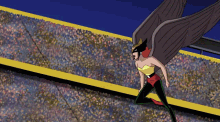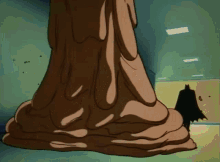Exciting New Releases: ZD Toys Collection & Superman Collection
Exciting New Releases: ZD Toys Collection & Superman Collection

Clayface: Complete History, Appearances & Character future in DCU
August 12, 2025 11 min read
If you’ve followed Batman’s rogues gallery long enough, you know most of them have a “before” and an “after.” But few are as heartbreaking as Matthew “Matt” Hagen’s transformation into Clayface.
Hagen wasn’t just another Gotham criminal. He was a movie star. One of the best. Charisma, talent, presence — the guy had it all. Then a car accident changed everything. His face, the thing that made him bankable in Hollywood, was wrecked. Casting directors stopped calling. Studios didn’t want him anymore. He went from being everywhere to being no one almost overnight.
That’s when Roland Daggett came into the picture. And this is where things go from sad to downright cruel. Daggett had this miracle cream called Renuyu — something that could literally reshape a person’s face. For Hagen, it was like a lifeline. Imagine looking in the mirror after months of seeing nothing but scars and suddenly seeing yourself again. Of course he took the deal.
But Daggett didn’t give anything for free.
He used Hagen’s new shapeshifting ability to run scams and frame people, including Bruce Wayne himself. The plan? Murder Lucius Fox and take down Wayne Industries. But Batman stopped him, and when Hagen failed, Daggett cut him off cold. That’s when the addiction kicked in. Hagen needed the cream — not just for the face, but because he couldn’t stand seeing what he’d become without it.
The breaking point came when he tried to steal more Renuyu. Daggett’s men caught him and went way overboard — they drowned him in the stuff. And here’s the twist: instead of killing him, it fused into his body on a cellular level. Hagen didn’t just wear different faces anymore. He was different. His whole body became living clay. He could morph into anyone, anything… but holding a form took effort. It was like flexing a muscle nonstop until it hurt. That meant he could never permanently be himself again.
This is where the tragedy hits full force.
His best friend Teddy tried to reach him, but Hagen was too far gone. Angry, humiliated, and desperate for revenge, he became Clayface and went after Daggett directly. Batman stopped him, but Clayface wasn’t done. He later crashed a live TV segment where Daggett was promoting Renuyu, trying to expose and kill him in one move. Batman cornered him in an AV room and used clips from Hagen’s old movies to mess with his head. Seeing the man he used to be — the man he’d never get back — completely unbalanced him.
That fight ended with Clayface electrocuting himself… or so it seemed. The cops left with what they thought was his body, but it was just a hollow shell. The real Clayface escaped disguised as a random woman.
And that’s why fans like me see Clayface as one of Batman’s most tragic villains. He’s not evil for the sake of it — he’s a man who lost everything, was manipulated, and turned into something he never wanted to be. His crimes are terrible, sure, but they come from a place of pain and survival. In a city full of monsters, Matt Hagen is one of the few who didn’t start out that way.
Clayface: Decay, Desperation, and the Fractured Self

When Clayface returned to Gotham months after his last battle, he wasn’t the towering, unstoppable monster people remembered — he was literally falling apart. The Renuyu formula that had fused with his body was destabilising his cells, and every movement risked him dissolving into nothing.
For all his power, Clayface was facing something scarier than Batman: the possibility of just… ceasing to exist.
Desperate, Hagen turned to someone from his old life — Dr. Stella Bates, a medical consultant who had once worked on one of his films. There were hints she’d fallen for him back then… or at least for the charming screen persona he played. Clayface knew it, too. And in a move that was equal parts survival and manipulation, he quoted romantic lines from his films to her — lines she thought were meant just for her. It worked. She believed he loved her.
Stella devised a possible solution: an experimental isotope called MP-40, capable of not only stabilising Clayface’s body but potentially increasing his abilities. The catch? It belonged to Wayne Biomedical. Clayface didn’t hesitate — he broke into the facility, but Batman intercepted him, forcing him to escape with only a small sample.
Back at Stella’s lab, the restoration process began… until Batman showed up again. The fight spilled out into the rainy Gotham night, ending on a cliffside over the river. Clayface lunged, but the downpour weakened him further, his clay form bloating and softening as water seeped in. Batman dodged until Clayface could barely hold himself together. He began falling apart, quite literally, before plummeting off the cliff into the ocean, dissolving into the waves.
It looked like the end.
But Clayface is hard to kill.
The current carried him to a factory dumping unknown chemicals into the river. They reintegrated him — and with the restoration came something new, something strange. He could now split parts of himself off entirely. Testing the ability, he created a smaller, human-like piece of himself and sent it out to scout. But something went wrong — the spawn lost all memory of him and wandered off, thinking it was just a lost child.
Clayface, now incomplete, wanted her back.
That “child” was found by Robin, who named her Annie and tried to help her figure out who she was. Their search eventually led to the sewers, where Clayface was waiting. The familiar surroundings sparked Annie’s memories — and with that, Clayface reabsorbed her. Robin, furious, demanded he bring her back. Clayface coldly told him it was impossible. To Robin, it felt like murder.
Clayface was defeated and sent to Arkham… but he didn’t stay long.
Not long after, he was back in Gotham, and this time his shapeshifting ability took a disturbing new form. On Christmas Eve, he split himself into multiple clay children and sent them to steal from Gotham Mall. Harvey Bullock and Renee Montoya, working undercover, caught wind of the scheme. Batgirl joined in, and together they used high-voltage electricity to bring the monster down.
It was another capture, another trip to Arkham… but if there’s one thing fans know about Clayface, it’s that he always finds a way to slip through Gotham’s fingers — in one form or another.
Clayface and the Secret Society

Years after his last run-in with Gotham’s heroes, Clayface’s life took another bizarre turn. Captured by black market mogul Morgan Edge, he wasn’t just locked up — he was quarantined, sealed away in biohazard containers like some dangerous lab specimen.
That could have been the end for him, but salvation came in an unexpected form: Gorilla Grodd and the Secret Society. They broke into Edge’s mansion, tore through his security, and freed Clayface.
Now, here’s what makes this so different from your typical villain recruitment. Most members of Grodd’s crew were there for revenge, money, or straight-up domination. Clayface? He didn’t care about any of that. He just wanted one thing — to be human again.
Grodd saw an opening. He promised Hagen a cure — not only to restore his human face, but to let him keep his shapeshifting powers. For someone like Clayface, that was irresistible. He joined without hesitation.
Batman eventually tracked him to a chemical factory, where the Society clashed with the Justice League in an all-out brawl. The League actually lost that first round — barely surviving — and afterward, their own personal tensions boiled over, causing them to split up.
The Secret Society pounced on the chaos. They started picking the League members off one by one, leading to a second showdown. In that fight, J’onn J’onzz (the Martian Manhunter) faced Clayface head-on. Using his own shapeshifting powers, J’onn impersonated Clayface and tricked Killer Frost into freezing the real one — who had been disguised as J’onn himself.
J’onn stayed in disguise until Grodd’s big, over-the-top plan came to light: execute the Justice League live in front of thousands of people at Gotham Football Stadium. When the Martian turned the tables and freed the team, Clayface was thawed out in the chaos.
What followed was a massive, stadium-wide battle — the Justice League versus the Secret Society, with the world watching. And in one of the wildest moments, The Flash crammed a bunch of fireworks into Clayface’s shifting mass, which Hawkgirl promptly ignited. The result? A spectacular mid-air explosion of clay and pyrotechnics.
As for whether that finished him off? Well… this is Clayface we’re talking about. When your body’s made of shapeshifting mud, “dead” is rarely permanent.
Abilities and Arsenal
Before Matt Hagen ever became a walking mass of living clay, he was already dangerous in his own way. The man was a world-class actor — a master of disguise who could slip into another person’s skin with frightening ease. Between his acting chops, his understanding of human behavior, and his skill with makeup, he could mimic not just someone’s face, but their voice, posture, and personality. That was before his powers ever came into play.
After the accident — or depending on how you look at it, the transformation — Clayface’s abilities became something out of a nightmare. His entire cellular structure turned malleable, allowing him to reshape his body into literally anything he could imagine.
-
Perfect Impersonation: He could transform into anyone — from an exact human double to an object in the room — making him one of Gotham’s ultimate escape artists.

-
Morphing Arsenal: He could extend his limbs to whip, grab, or crush opponents from a distance, alter his size and density for raw power, and morph parts of his body into blades, spikes, or even massive blunt weapons.

-
Absorption Attack: His amorphous form could engulf objects — or people — and suffocate them in a mass of living clay.

After his near-death experience in the river, the chemicals that restored him unlocked an even stranger power: self-division. Clayface could split off separate entities from his body, each able to act independently. It’s how he created “Annie” and later split into multiple clay “children” for his theft on Christmas Eve.
Electricity was a weird chapter in his abilities. In his first battle with Batman, he faked death by electrocution, proving voltage didn’t actually hurt him. But later, Batman managed to restrain him with an electrified Batarang. Whether this was due to the factory chemicals that brought him back altering his body — or something else — was never confirmed.
For all his raw power, there’s one big limitation: willpower. Maintaining a form is like keeping a muscle constantly flexed — possible for short bursts, exhausting over time. Which means that no matter how many faces he wears, Clayface’s biggest weakness will always be that it takes everything he has just to keep them from melting away.
Background and Legacy of Clayface
Clayface isn’t just one villain — he’s a legacy. Over the decades, the name has been worn by several different characters in the comics, each with their own origin, powers, and personality. The DC Animated Universe version we know pulls traits from three of the most notable comic book incarnations: Matt Hagen, Basil Karlo, and Preston Payne.
-
Basil Karlo was the very first Clayface, introduced by Batman co-creator Bob Kane. Originally, Karlo wasn’t a shapeshifting monster at all — just an actor turned killer who wore a mask. He was inspired by Lon Chaney, “The Man of a Thousand Faces” (a title also used for Hagen in Feat of Clay) and his name was a mash-up of classic horror icons Basil Rathbone and Boris Karloff.
-
Matt Hagen in the comics was a treasure hunter who stumbled across a strange pool of protoplasm. Immersing himself in it turned him into living clay, but the change was temporary. To maintain his powers, he had to keep returning to the pool — until he eventually learned to recreate the substance. This concept heavily influenced the DCAU’s version of Clayface.
-
Preston Payne was a tragic figure suffering from chronic hyperpituitarism, a condition that severely distorted his body. In desperation, he sought the world’s best cosmetic surgeons, but found no success — until he learned about Matt Hagen and his unique condition.
The DCAU Clayface borrows Hagen’s mutation and tragic downfall, Karlo’s acting background, and Payne’s physical tragedy, combining them into a single, more layered character.
Visually, Clayface’s look stayed fairly consistent across Batman: The Animated Series and The New Batman Adventures. In the latter, his design had slightly sharper edges and a lighter color palette — part of the overall style change for the series. His shapeshifting animation, however, noticeably improved in The New Batman Adventures and Justice League. On the DVD extras, Bruce Timm credited this to a new animation studio that had a better grasp of how a liquid, ever-shifting body should “flow” on screen.
And here’s a fun detail for fans: in the tie-in comic Batman Adventures Vol. 2 #14, it’s revealed that Hagen’s love for acting started because he was a fan of Simon Trent — better known as the Grey Ghost. That little connection makes his fall from Hollywood royalty to Gotham monster all the more tragic.
Appearances
For longtime Batman: The Animated Series fans, Clayface’s journey was a mix of haunting drama and surprise cameos that made you pause and go, “Wait, was that him?”
-
Batman: The Animated Series
His first nod comes quietly in "Beware the Gray Ghost"—just a poster in the background, but for eagle-eyed fans, it’s a sly wink at his theatrical roots. Then came "Feat of Clay", the two-parter that cemented him as one of the most tragic and memorable villains in the DCAU. We saw the depth of Matt Hagen’s fall—more than just a shapeshifting monster, but a man broken by desperation. He pops up again in "The Worry Men", though not in the flesh—just as one of Mad Hatter’s eerie villain mannequins. And in "Mudslide", we watch him fight—literally and figuratively—to keep himself together. By the time "Batgirl Returns" rolls around, he’s only mentioned, but his shadow still lingers over Gotham’s underworld. -
The New Batman Adventures
Clayface slides into the revamped art style in "Holiday Knights" and "Growing Pains", where his presence is as unsettling as ever. His sharper, cleaner lines in animation made his transformations even more fluid—and more chilling. -
Justice League
By the time we get to "Secret Society", Clayface is operating on a bigger stage, crossing paths with the League. It’s the kind of escalation that makes you realise—his powers, his cunning, and his tragedy were never meant to stay confined to Gotham’s streets alone.
Clayface remains one of Batman’s most fascinating and tragic foes — a villain whose story blurs the lines between performance and reality, tragedy and monstrosity. From his ever-shifting form to the layers of humanity buried under the mud, Clayface has cemented his place as an icon in the DC universe. His animated appearances not only redefined the character for a generation but also proved how complex and heartbreaking a “monster” could be.
James Gunn never had “make a Clayface movie” on his DCU bingo card… but here we are.
A while back, DC fans got hit with the unexpected news — a solo movie about one of Batman’s most underrated and haunting villains is officially on the way. And the best part? It’s being helmed by horror mastermind Mike Flanagan. Starring Tom Rhys Harries of The Return.
Talking to io9, Gunn admitted the project wasn’t even on his radar until Flanagan walked into DC Studios with a pitch so good, it knocked him sideways. “I didn’t plan on making a Clayface movie,” Gunn confessed. “Mike came in, pitched this wonderful idea, and I was like, ‘Damn, I can’t believe you got me to want to make a Clayface movie.’”
From there, it was all about the script. First draft? Great. Second draft? Even better. By the time Gunn read it, he knew — “Let’s do it.” And just like that, Clayface carved himself a spot in the upcoming DCU slate.
Mark your calendars: Clayface is set to hit theatres in September 2026, just one month before Robert Pattinson’s The Batman Part II lands under the DC Elseworlds banner. When asked if the close release dates might confuse, Gunn brushed it off — “Clayface is in the DCU, so it doesn’t matter.” Translation: marketing will make sure fans know these two live in totally separate corners of the DC multiverse.

Also worth noting — there’s no confirmation yet if Batman himself will show up in Clayface’s story. The DCU’s Dark Knight is still set to make his debut in The Brave and the Bold. But before all of that, Clayface made his first DCU appearance in the adult animated series Creature Commandos, which is currently dropping episodes weekly on Max.
From surprise pitches to big-screen villainy, Clayface’s rise in the DCU is proof that sometimes the best projects are the ones nobody saw coming — not even James Gunn.
If you’re a fan of iconic comic book characters, step into the Marvel multiverse and web-sling into our exclusive Batman and DC collectibles. Perfect for any true fan’s shelf, these pieces are crafted to capture the heart of the stories we love. Don’t just watch the heroes — own a piece of their world.
Subscribe
Sign up to get the latest on sales, new releases and more …
